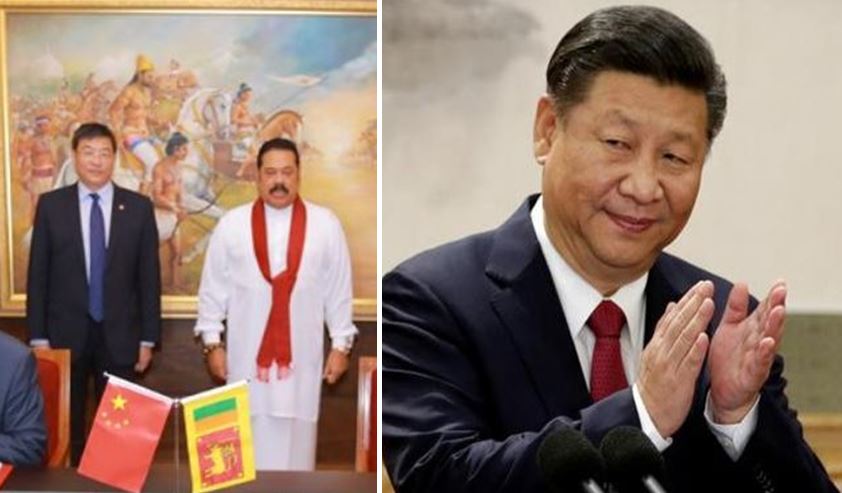At a time when China has successfully exported the Wuhan virus to the world, it has resorted back to its nefarious debt-trap diplomacy as the country has recently granted a $500 million loan to the island country of Sri Lanka to fight the Wuhan virus. Not so long ago, Sri Lanka was forced to surrender the Hambantota port to China as it was reeling under Chinese debt-trap.
China approved a request made by the Sri Lankan government to provide a concessionary loan of US $500 million with a term of 10 years in order to battle the novel Wuhan coronavirus.
According to the Chinese embassy in Colombo, Sri Lanka’s Ministry of Finance signed the 500 million US dollar loan agreement with China Development Bank in Sri Lankan Prime Minister Mahinda Rajapaksa’s Office.
“This time, the Chinese national leaders, the Chinese government and related financial institutions, in their efforts to fight the new coronavirus epidemic, actively responded to Sri Lanka’s urgent financial and anti-epidemic needs, and made special arrangements as soon as possible,” said Mahinda Rajapaksa.
According to Sri Lanka’s Finance Ministry, the loan would be given to the island country comes with a maturity period of 10 years and a three-year grace period along with concessionary interest rates linked to 6 Month USD LIBOR.
Instead of offering a loan to Sri Lanka, China should have offered an aid especially considering the fact that China is the reason why the world collectively has come to a standstill to fight the Wuhan virus. Sri Lanka is not best placed when it comes to its debts, besides what happens when the grace period is over?
It is important to note that the newly elected Sri Lankan President Gotabaya Rajapaksa has vowed to take back the strategically important Hambantota port. Gotabaya has said that he would request China to re-negotiate the 99-year lease agreement of the Hambantota port. He also said that people of Sri Lanka are not happy with the existing agreement and want a better deal.
Rajapaksa also said, “The strategically important, economically important harbour, giving that is not acceptable. That we should have control. We have to renegotiate. Giving a terminal for an operation is a different thing, giving some location to build a hotel is different, not the control over a very important place, it is not acceptable. So that is my position.”
It is relevant to mention here that the Hambantota port project which came up during the days of the Mahinda Rajapaksa was a major reason of deterioration behind Indo-Sri Lanka relations. The port has become a living example of the Dragon’s “debt-trap” diplomacy. Financed by the Chinese despite adverse feasibility reports and refusal by India for such a project, the port turned out to be a miserable failure.
While it became an example of Chinese “debt-trap” diplomacy, the port became a matter of grave concern for India as it ensured Chinese presence at a strategic location in the Indian Ocean region. As such it was seen as a fillip to China’s strategy of encircling India in the Indian Ocean Region.
What added to India’s woes is the fact that unable to pay off the debt, Sri Lanka had to hand over the port and a mammoth 15,000 acres of land around it to the Chinese on a 99-year lease. This was strategically crucial for China as it gained foothold just a few hundred miles off the shores of India.
Sri Lanka needs to be extremely careful of not repeating the mistakes of the past especially at a time when the country is currently facing a mammoth challenge in the form of domestic and foreign debt of US $60 billion, under which the Sri Lankan economy is currently reeling.
